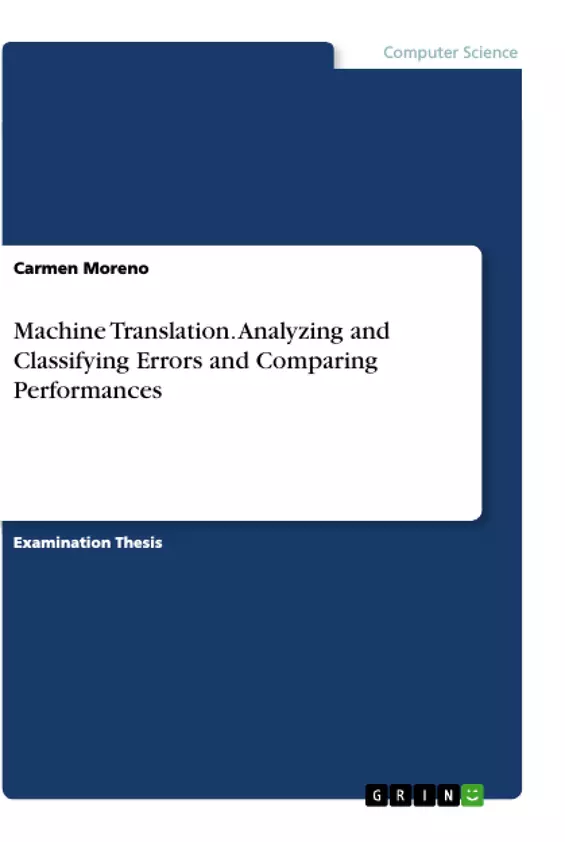This undergraduate dissertation is about machine translation tools from English into Spanish and about computer-assisted translation tools. The main goal is to identify the importance of these tools within the working environment of translators nowadays and to learn about their potential.
The first section of this dissertation consists of an introduction in which I justify the chosen subject. Next, the different types of MT are analysed and some aspects on the main online MT systems such as Google, Systran or DeepL are explained. Four documents of different nature have been selected in order to be translated with these same MT engines. The goal is to identify, analyse and classify the errors made by each MT system and to compare their performance. The processes of pre- and post-editing are explained through practical examples. Finally, the advantages and disadvantages of MT are presented, as well as an explanation on computer-assisted translation tools which already allow translators to use MT in their work environment.
Inhaltsverzeichnis (Table of Contents)
- Information about this project
- Abstract
- Keywords
- Reasons why I chose this topic
- Introduction
- Types of MT
- Rule-based MT
- Direct systems
- Indirect systems
- Transfer systems
- Interlingua
- MT based on the analysis of linguistic corpora
- Example-based MT
- Statistical MT
- Neural MT
- Hybrid translation
- MT tools
- Systran
- DeepL
- Text excerpts translated with MT
- The legal text
- The scientific text
- The technical text
- The press article
- Analysing and classifying the errors
- Results
- Pre-editing and post-editing
- Advantages and disadvantages of MT
- Conclusions
- References
- Endnotes
Zielsetzung und Themenschwerpunkte (Objectives and Key Themes)
This dissertation examines the potential of machine translation (MT) and computer-assisted translation (CAT) tools in the modern translation industry, specifically focusing on translations from English into Spanish. Its objective is to assess the importance and capabilities of these tools within the working environment of translators.
- The different types of MT and their underlying principles.
- The performance of various MT systems, including Google, Systran, and DeepL.
- Analysis and classification of translation errors generated by MT engines.
- The practical application of pre-editing and post-editing in the MT workflow.
- The advantages and disadvantages of MT for translators and translation companies.
Zusammenfassung der Kapitel (Chapter Summaries)
The dissertation starts with an introduction outlining the relevance and potential of MT in the field of computational linguistics. It then delves into the different types of MT, ranging from rule-based systems to corpus-based approaches, including statistical and neural MT. The various MT tools, like Systran, Google Translate, and DeepL, are then analyzed and compared. The dissertation proceeds to examine the translation of different text excerpts (legal, scientific, technical, and press) using these MT engines, analyzing and classifying the errors produced. It concludes with a discussion of the advantages and disadvantages of MT in the context of translation workflows, emphasizing the importance of pre-editing and post-editing for achieving high-quality translations.
Schlüsselwörter (Keywords)
This dissertation focuses on key concepts like Machine Translation, Computer-Assisted Translation, Google Translate, Systran, DeepL, translation industry, pre-editing, and post-editing. These terms are crucial for understanding the current state of MT and its potential role in shaping the future of the translation industry.
- Arbeit zitieren
- Carmen Moreno (Autor:in), 2018, Machine Translation. Analyzing and Classifying Errors and Comparing Performances, München, GRIN Verlag, https://www.grin.com/document/1035989



